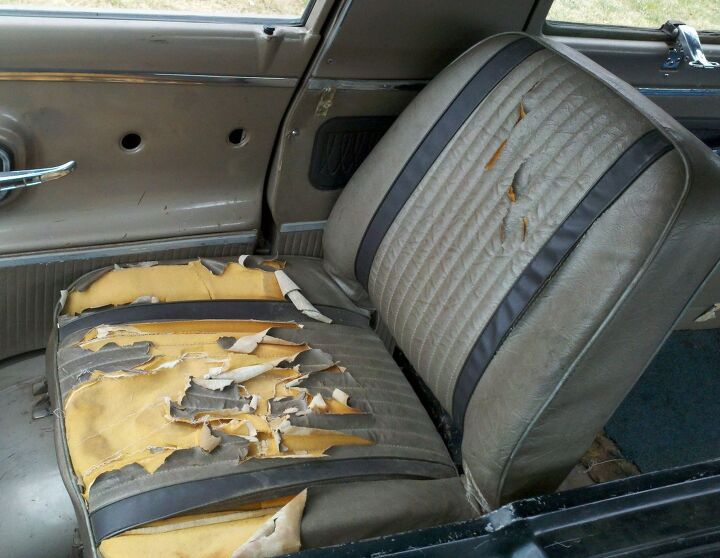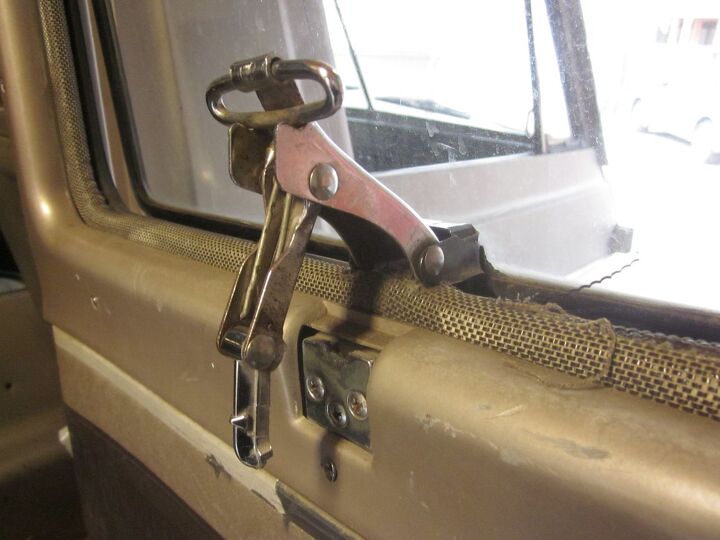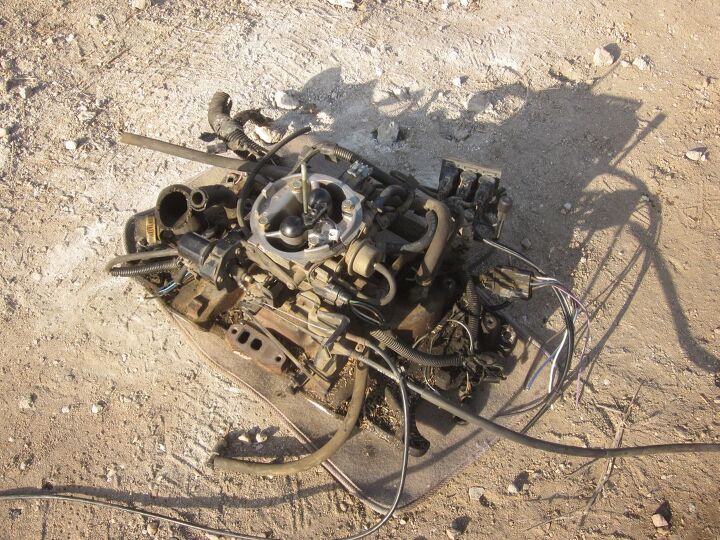#DodgeA100HellProject
Denver Alley Scavengers Scrap-Maddened By Torqueflite Visible In Yard, Camouflage Only Option
These days, with scrappers paying $240/ton (the going rate in Denver; I hear it’s similar elsewhere) for cars and steel car parts, we’ve seen an explosion in the numbers of guys cruising around in hooptied-out minivans, pickups and the occasional bicycle with trailer, looking for metal. The older parts of the Denver urban core, where I live, have alleys between streets, and so the scavengers (I call them Jawas) spend their days patrolling these alleys in search of stuff they can turn into cash at the scrapper. It turns out that these guys can smell a transmission as they pass by, even one that’s behind a gate and barely visible.
Junkyard Jackpot: The Missing Pieces For the A100 Hell Project Puzzle
My 1966 Dodge A100 Hell Project has been in semi-hibernation since the summer, but now it has a rebuilt front end and I’m ready to get back into turning it into the 8-track-equipped custom van of my dreams. Since I bought my van project, the toughest problem has been finding junked A100s to provide a bunch of bits and pieces needed to get everything working properly. Alex Kierstein of Hooniverse grabbed a window latch from a Seattle junkyard and shipped it to me, which was a big help, but my van still had some bad glass and an annoying assortment of missing pieces. Then, last week, I got word that an A100 had appeared in a self-service yard a few miles from my house.
A100 Hell Project: Finally, the Right Tachometer
The thing about my ’66 Dodge A100 van project that makes it a challenge is that I’m going for an early 1970s customization job, not the far easier late 1970s routine. My van won’t have Aztecs On Mars airbrush murals or a wood-burning stove (not that there’s anything wrong with those things), but it does have a telephone-handset-style 23-channel CB radio, (faux) Cragar S/S wheels, and now it has a Watergate-burglary-era cheap aftermarket tachometer.
A100 Hell Project: Red Metalflake Naugahyde… or Reproduction Dart GT Vinyl?
As the 1966 Dodge A100 Hell Project progresses (slowly), I’m finally at the point at which T-shirts and towels draped over the trashed seats— nuked by over a decade of outdoor storage in the Colorado sun— no longer cut it. It’s time to fix ’em up!
A Little Help From Hooniverse: Leaky Van Window Fixed With Long-Distance Junkyard Parts
The A100 Hell Project really isn’t very hellish, since the van is rust-free and still has most of its tough-to-find trim parts. However, the list of really irritating minor problems that must be solved to bring a project vehicle up to real-world-enjoyable status is always long. One of the most maddening was the busted window latch on one of the right-side windows. Chrysler changed the design on this latch— which probably cost about 14 cents per unit new— in the late 1960s, which means they’re very rare in junkyards, and nobody seems to be selling them on eBay. Snow and rain were getting in, the window clattered while driving, and anyone who wanted to rummage in the van for crack-exchangeable valuables could reach right in and pop the side door lock. What to do?
Carburetor Bad, Fuel Injection Good: Custom Dodge Van Donates EFI System To A100 Hell Project
I’ve been driving the A100 Hell Project around with its horrible-at-best Carter BBD carburetor (which Chrysler almost certainly chose because it was 18 cents cheaper than a Holley), and every time it stumbles, refuses to idle, or performs any of the standard repertoire of BBD tricks, I swear to myself that I’m going to go to fuel injection real soon. That process began weekend before last, when I grabbed the intake and throttle body off an ’89 Dodge van.
Dodge A100 Hell Project: You Want Luxury? Here's Luxury!
These days, we’ve got endless choices in plush, comfy trucks. Back when my 1966 Dodge A100 project van was built, the top trim level of the A100 was the Sportsman Custom, and that was one of your few luxury-truck choices at the time. Naturally, I insisted on a Sportsman Custom when I went shopping for a vintage flat-nose van. With the Sportsman Custom, you got such creature comforts as ashtrays, an AM radio, and— best of all— a steel step that popped out when you opened the side doors. The one on my van wasn’t exactly working when I bought it, but some bashing with a sledgehammer careful adjustment and hosing down with Liquid Wrench judicious lubrication fixed it right up!
Down On The Mile High Street: 1966 Dodge A100 Sportsman
It just occurred to me that my own A100 Hell Project hasn’t been featured on Whatever I’m Calling The Series Of Photographs Of Old Street-Parked Vehicles These Days. It’s a total nightmare to drive in the snow (particularly for a snow-country n00b like me), but it looks pretty good with the white stuff.























Recent Comments